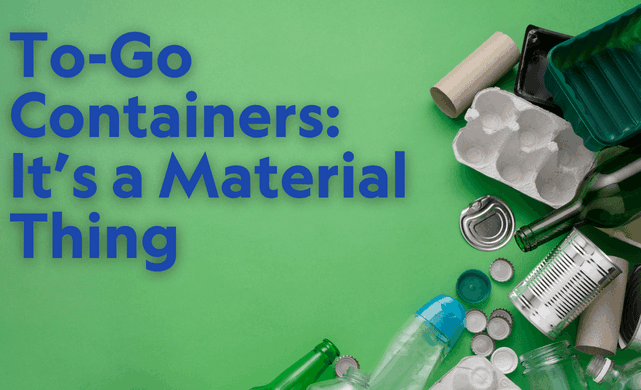We're still looking for the truth regarding how various kinds of containers impact the environment. When we designed MyGo Containers™, we took everything into consideration to ensure our design was environmentally safe. The three R's: Reduce, reuse, and recycle inspire most organizations choosing MyGo Containers™. Switching to reusable carryout containers is not done to save money, yet it will save money anyway. By switching to a reusable solution, you can immediately minimize the use and cost of disposable to-go packaging. Let's look at the ugly truth about how different materials used in to-go containers have a negative impact on the environment.
Plastics:
Only 9% of plastics in the United States are recycled, according to the unpleasant truth about plastics. This is referred to as "Wish-cycling." We use single-use goods in the hopes that they will be recycled. Even bioplastics made from reusable resources such as palm leaves or bamboo contain chemicals, making them neither healthier nor compostable, causing multiple issues. This is a problem rather than a solution.
Aluminum:
Recycling aluminum uses only 5% of the energy that is used to produce new aluminum from bauxite. However, recycling aluminum releases several toxic chemicals into the environment. Furthermore, recycling aluminum generates a very toxic waste product known as "dross," which must be buried in landfills. This dross must be properly packed in containers to prevent leakage and groundwater contamination.
Styrofoam:
Expanded polystyrene, popularly known as Styrofoam, is accepted at only a few recycling locations. As a result, most foam food containers that are placed in recycling bins end up in landfills, where they never biodegrade. Or, much worse, in our rivers and streams. Styrofoam is rarely recycled, and when it is, it is utilized to make a completely different product. New foam containers are not made from recycled foam containers. As a result, any new foam containers must be constructed entirely from virgin petroleum resources. Producing new foam containers would still be unsustainable even if polystyrene recycling gained momentum.
Compostable:
While these popular "compostable" containers are convenient, they don't exactly decompose in an environmentally friendly way. In fact, as they decompose, they leave behind harmful substances. Because of the components used to keep the container together, studies show that you shouldn't even put them in your own compost.
With the help of MyGo Containers™, our containers are made from materials that can be repurposed at the end of their life cycle. For more information on how you can promote sustainability without sacrifices you can visit www.mygocontainers.com or www.cooksdirect.com. MyGo Containers™ can be purchased from either Amazon or Cooks Direct.
